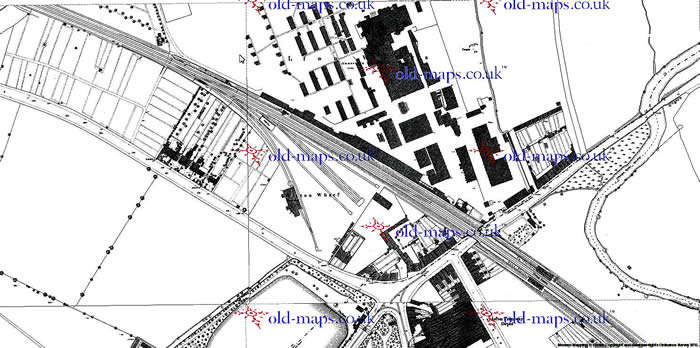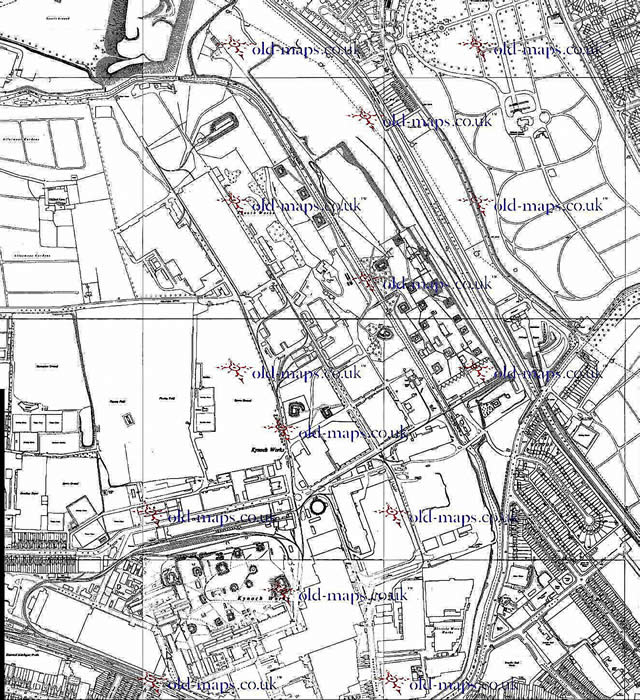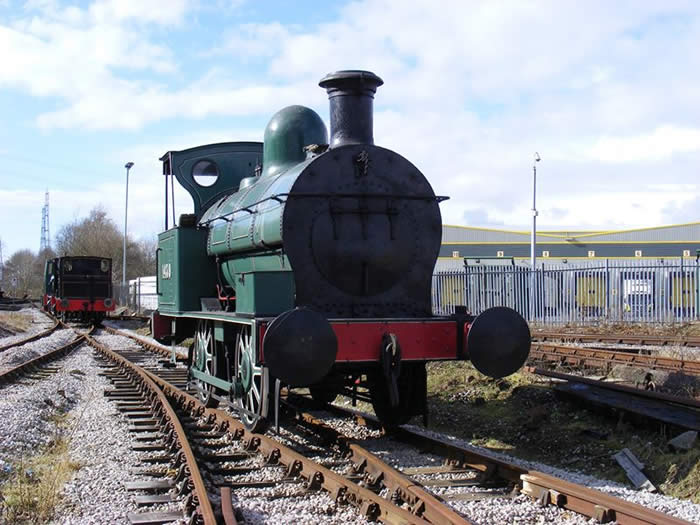Witton Wharf a goods yard was here in aston Lane served by London Midland and Eastern prior to 1850's
WITTON WHaRF circa 1899:
Davis W. H. coal merchants
allen T. F. & Son, coal merchants
Drury J. B. coal merchants
Evans Wm. J. coal merchants
Birmingham co-operative Society Ltd coal merchants
Barsons Geo. coal merchants
Hamstead Officials coal company Ltd
British Railways (London Midland Region) Witton Goods Station
Lovell c. Shaw & Sons Ltd shipping agents
Below two maps showing Witton Wharf and it's connection to Kynock's internal rail system


No. 1439 was built by the LNWR at crewe in 1865. It was rebuilt in November 1887 and again in September 1898. The original Ramsbottom chimney would have been replaced by a Webb pattern, at one of these rebuildings, and a cab added. as LNWR No. 3042, it worked for a period in and around Liverpool Docks, being fitted with bell gear and oil fuel apparatus for this purpose.
In 1914 it was loaned to Kynoch Ltd., at Witton, Birmingham, subsequently being purchased by them in 1919, becoming their No. 4. Larger round buffers were fitted. a new boiler was supplied by Bagnalls in 1935, to the same dimensions as the original boiler, except that the pressure was increased to 160psi. a new dome top, of increased strength, and 2 Ross “Pop” safety valves were fitted. The boiler has a cylindrical steel firebox, not unlike that of a Lancashire boiler. This feature is most unusual in a steam locomotive. The Ramsbottom smokebox, with flap door, was retained.
The loco became redundant in 1953 and was given by IcI (as successors to Kynoch) to the BTc in 1954. It is considered to be the only remaining loco of the Ramsbottom era. It was stored for a while at Hellifeld, prior to the opening of the NRM at York. The loco joined the collection at Riversway during January 2009, and is on display in the museum building.

'Ramsbottom, 1439 is on loan from the National Railway Museum, York'

RaILWaYS
In 1837 the Grand Junction Railway from Liverpool came through aston. The route, surveyed by George Stephenson, took advantage of the Tame valley's slight gradient, although this involved several crossings of the meandering river - including two across the great bend near aston church. a ten-arched viaduct was built over the two arms and the meadow between. James Watt Junior's objections to the railway may partly explain its route: even so he lost the east end of his prized chestnut avenue from aston Hall. Within the next decade a cut was made to join the two arms of the river loop on the Witton side. There were low bridges over Witton and aston Lanes and Lichfield Road, canal and brook: there from the great curve of the rails swept down through Nechells and Duddeston to a temporary halt at Vauxhall, thence to curzon Street terminus in the Rea valley. astonians wishing to travel on the new-fangled trains to Liverpool or London had to make their way to curzon Street: from 1842 they could go to Derby and the north-east from Lawley Street terminus. Ten years later Navigation Street (New Street) Station opened in the centre of Birmingham. In 1854 aston Station gave local access to the Grand Junction line and New Street: not until 1880 was there a loop line from aston to Stechford on the London line. Witton Station opened in 1876. Meanwhile Hockley Station (1852) had provided an access point for the Black country and Oxford lines, and Saltley Station (1854) for the Midland lines to north-east and south-west. In 1862 the Sutton coldfield line (later extended to Lichfield) left the Grand Junction south of aston Hall Road. Both these lines helped to accelerate development of east aston and south Erdington, as there were sufficient stopping trains to provide a commuters' service. Until the advent of electric tramcars the railways were much used for travel to aston Hall and Lower Grounds, and to Sutton Park for some decades longer. There were no sidings or railway facilities in the manor, chiefly because the lines were carried on embankments above the Tame floods. 'aston' Goods Yards were in Duddeston, and those near Witton Station were in Handsworth. |